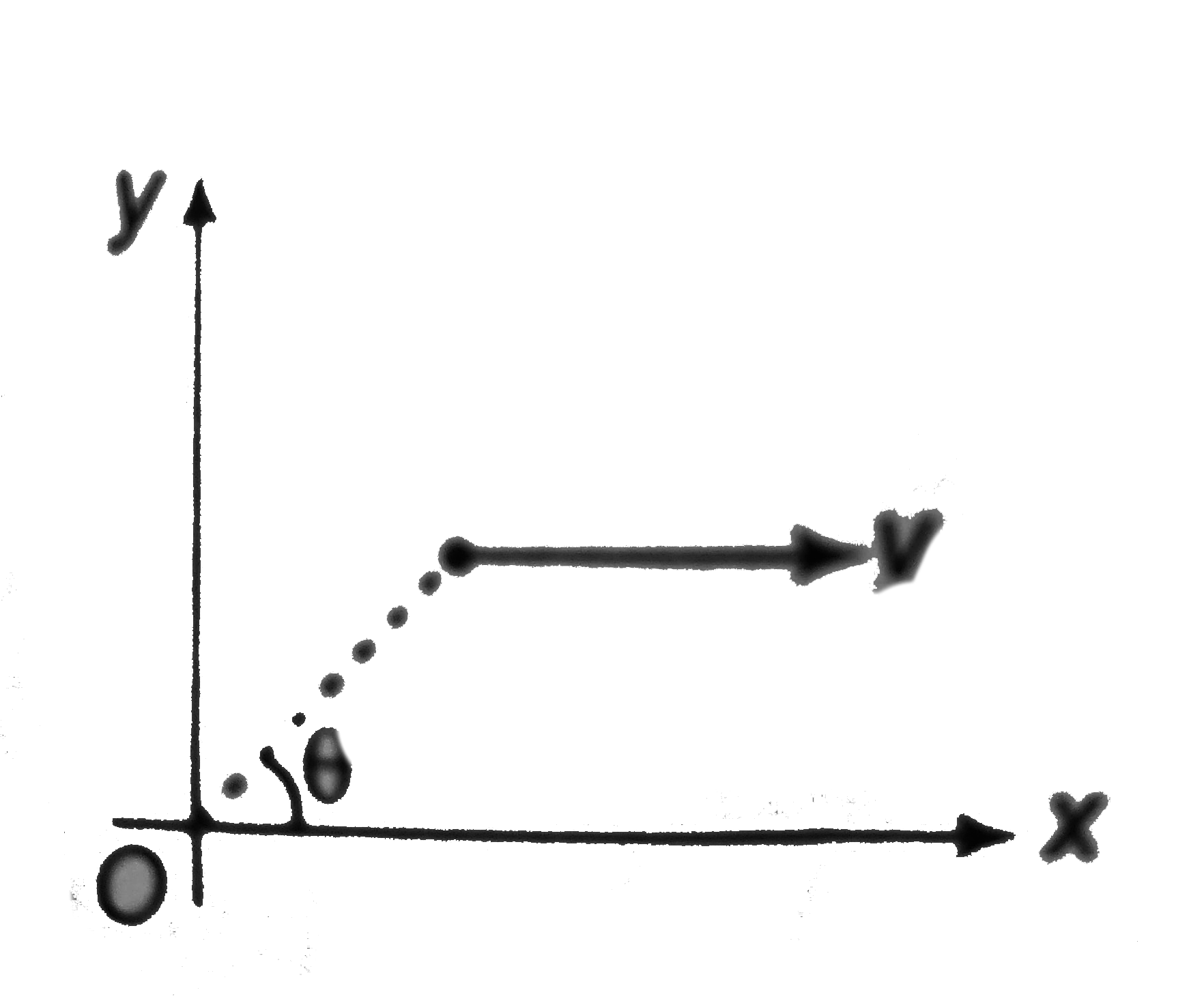The angular velocity of a particle rotates with constant speed on only one circle about a fixed axis is constant but its linear velocity changes.. It is possible? Why? Solution in Gujrati
Yes. The direction of velocity in circular path constantly changes and hence linear velocity is not constant. Here axis is fixed and circular path is only one. Hence the angular velocity is obtained parallel to the axis and so it is constant.
Topper's Solved these Questions
- BOOK - KUMAR PRAKASHANCHAPTER - SYSTEMS OF PARTICLES AND ROTATIONAL MOTIONEXERCISE - SECTION-D NCERT EXEMPLAR SOLUTIONS13videos
SYSTEMS OF PARTICLES AND ROTATIONAL MOTION
- BOOK - KUMAR PRAKASHANCHAPTER - SYSTEMS OF PARTICLES AND ROTATIONAL MOTIONEXERCISE - SECTION-D NCERT EXEMPLAR SOLUTIONS (VERY SHORT ANSWER TYPE QUESTIONS)5videos
SYSTEMS OF PARTICLES AND ROTATIONAL MOTION
- BOOK - KUMAR PRAKASHANCHAPTER - SYSTEMS OF PARTICLES AND ROTATIONAL MOTIONEXERCISE - SECTION-B NUMERICAL FROM .DARPAN. BASED ON TEXTBOOK17videos
SYSTEMS OF PARTICLES AND ROTATIONAL MOTION
- BOOK - KUMAR PRAKASHANCHAPTER - QUESTIONS ASKED IN JEE - 2020 EXERCISE - Question16videos
QUESTIONS ASKED IN JEE - 2020
- BOOK - KUMAR PRAKASHANCHAPTER - THERMAL PROPERTIES OF MATTEREXERCISE - Question Paper (Section - D) (Answer following in brief :) Each carry 4 marks1videos
THERMAL PROPERTIES OF MATTER
Similar Questions
For which of the following does the centre of mass lie outside the body?
04:01View SolutionThe centre of gravity of a body on the earth coincides with its centre of mass for a small object whereas for an extended object it may not. What is the qualitative meaning of small and extended in this regard? For which of the following two coincides? A building, a pond, a lake, a mountain?
02:46View SolutionThe particles of mass m1,m2andm3 are placed on the vertices of an equilateral triangle of sides .a.. Find the centre of mass of this system with respect to the position of particle of mass m1.
 02:32View Solution
02:32View SolutionA non-isotropic solid metal cube has coefficient of linear expansion as 5×10−5/∘C along the x-axis and 5×10−6/∘C along y-axis and z-axis. If the coefficient of volumetric expansion of the solid is n×10−6/∘C then the value of n is....
02:05View SolutionIn an experiment on the specific heat of a metal, a 0.20 kg block of the metal at 150∘C is dropped in a copper calorimeter (of water equivalent 0.025 kg) containing 150 cm3 of water at 27∘C. The final temperature is 40∘C. Compute the specific heat of the metal. If heat losses to the surroundings are not negligible, is your answer greater or smaller than the actual value for specific heat of the metal ?
02:09View Solution
A particle mass parallel to x-axis with constant velocity v as shown in the figure. The angular velocity of the particle about the origin O02:39View SolutionA particle moves along a circle of radius R =1m so that its radius vector vecr relative to a point on its circumference rotates with the constant angular velocity omega=2rad//s . The linear speed of the particle is
02:13View SolutionA particle moves with constant angular velocity in a circle. During the motion its
02:42View SolutionFor a particle moving in a horizontal circle with constant angular velocity:
02:22View SolutionA particle moves in a circle with constant angular velocity ω about a point P on its circumference. The angular velocity of the particle about the centre C of the circle is
03:44View SolutionA solid sphere is rotating with a constant angular velocity about an axis touching the surface. Its angular momentum will be:
02:29View SolutionA wheel is rotating about its axis at a constant angular velocity. If suddenly an object sticks to it on the rim, then its M.I. will:
03:20View SolutionA particle attached to a string is rotating with a constant angular velocity and its angular momentum is L. If the string is halved and angular velocity is kept constant, the angular momentum will be
03:19View SolutionA particle of moves with constant angular velocity in a circle. During the motion its
01:34View SolutionA circular disc made of iron is rotated about its axis at a constant velocity Ω. Calculate the percentage change in the linear speed of a particle of the rim as the disc is slowly heated from 20∘C to 50∘C keeping the angular velocity constant. Coefficient of linear expansion of iron =1.2×10−5C−1.
02:00View Solution

